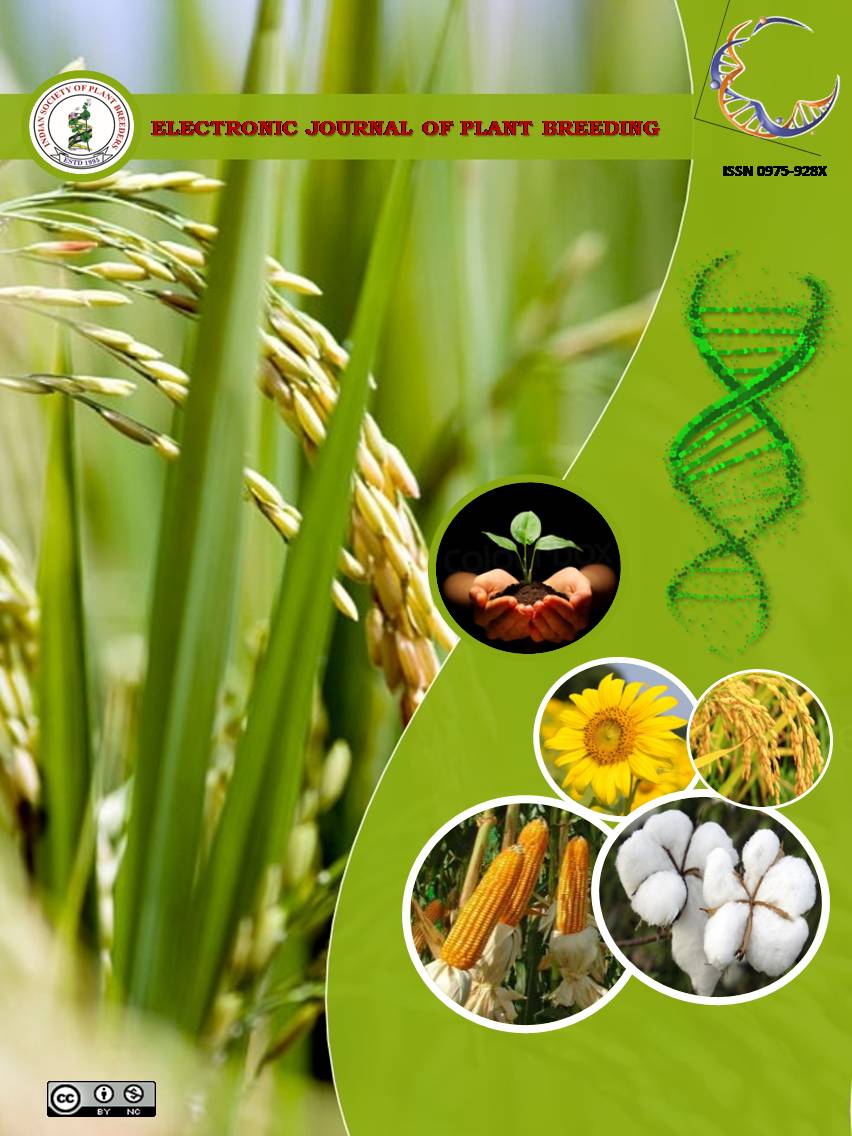Study of genetic architecture of grain yield and quality traits through generation mean analysis in rice (Oryza sativa L.)
Abstract
A perusal of gene effects in generation mean analysis for three crosses viz., BPT 5204 x IR 36, BPT 5204 x NLR 34449 and RNR 2465 x IR 64 revealed the presence of a significant proportion of epistatic effects besides the major components viz., additive (d) and dominance (h) gene effects for important yield and quality attributes. Partitioning of variance indicating that the mean values (m) for gene effects were highly significant in all the three crosses for most of the traits, the results of dominance (h) and dominance × dominance (l) type interactions revealed that duplicate type of epistasis was prevalent for most of the traits in all the six crosses except in RNR 2465 x IR 64 for the number of filled grains per panicle; BPT 5204 x NLR 34449 for kernel breadth and kernel elongation ratio and BPT 5204 x IR 36 for harvest index where, complementary gene action played a vital role in the inheritance of the traits. Therefore, improvement of these traits appears to overwhelmed with difficulties as simple selection techniques will not be able to f ix superior lines in the early segregating generations. Postponement of selection for superior lines to later generations in pedigree breeding will be effective. However, one or two cycles of recurrent selection followed by pedigree breeding will be effective and useful to utilize both additive and non-additive gene effects. The predominance of dominance and epistatic interactions in all the crosses for quality traits indicates that selection would be more effective if the dominance and epistatic effects are first reduced by a few generations of selfing.

